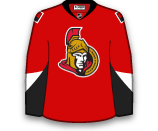Chiarot, 23, has nine points (4G / 5A) in 24 games with St. John’s this season. He has just one game of NHL experience, but could make his season debut tomorrow with Tobias Enstrom on IR with a lower-body injury.

Chiarot, 23, has nine points (4G / 5A) in 24 games with St. John’s this season. He has just one game of NHL experience, but could make his season debut tomorrow with Tobias Enstrom on IR with a lower-body injury.

Wilson, 22, was the Penguins seventh round pick (209th overall) in 2011. Wilson has regiestested three goals and nine assists (12 points) in 21 games in his first year with WBS. The Penguins placed Kris Letang on IR to make room for Wilson to be recalled.
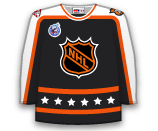
Tennyson got into one game during his recall. He played 20:15 and recorded one shot and a minus-1 rating.
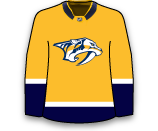
Pickard had a great stint with the Avalanche, winning three games in three starts and two relief appearances, while posting a 1.99 GAA and .936 SV%. With Semyon Varlamov set to return on Thursday, the Avalanche had to send Pickard back to the AHL.

Bobkov, 23, has been recalled to backup Frederik Andersen tonight because Jason LaBarbera is out with an upper-body injury. Bobkov has gone 1-4-0 with a 4.70 GAA and .842 SV% with Norfolk this season.
Lindbohm, 21, did not get into the lineup during his recall. He heads back to Chicago where he has recorded four goals and three assists in 19 games.

The Avs lost John Mitchell and Marc-Andre Cliche over the weekend so they have recalled the 21-year-old centre and he is expected to make his NHL debut tonight vs. Montreal. He has recorded 12 points (4G / 8A) in 18 games with Lake Erie this season. He was the Avs’ 7th round pick (192nd overall) in 2012.
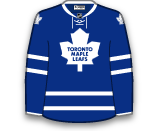
In the wake of more injuries to Avalanche forwards, the 22-year-old centre has been recalled and is expected to be in the lineup tonight vs. Montreal. Sgarbossa has three goals and nine assists (12 points) in 18 games with Lake Erie this season. He has no points in six career NHL games.

Pitlick, 23, has registered three goals and six assists in 14 games with OKC this season. In 10 games with the Oilers last season, he had one goal and a minus-2 rating.

Ellis did not get into a game during his recall, but his return to the AHL suggests that Roberto Luongo is back to full health and could start on Monday.
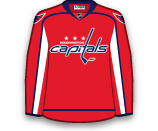
Ebbett, 31, began the season with Pittsburgh, but did not dress for any games. Ebbett is the WBS Penguins leading scorer this season with 17 points (5G / 12A) in 17 games. His 12 assists also lead the team.

Wennberg has three assists and a minus-14 rating in 21 games with the Blue Jackets this season. Kerby Rychel and Michael Chaput were recalled with Wennberg going down.

Rychel, 20, has collected six goals and seven assists and 30 penalty minutes in 22 games with Springfield in his first professional campaign. He split the 2013-14 season between the Guelph Storm and Windsor Spitfires of the Ontario Hockey League, posting 34-56-90 and 43 penalty minutes and scoring the title-clinching goal in Game 5 of the OHL Finals to help Guelph win the J. Ross Robertson Cup.
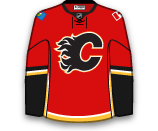
Chaput, 22, recorded two assists and eight penalty minutes in 18 games with the Blue Jackets this season and has added one goal and four assists in five games with Springfield. He has recorded three assists and 10 penalty minutes in 35 career NHL games
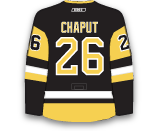
Miller has yet to record a point in three games with the Rangers but has 15 points (6G / 9A) in 18 games in Hartford. He will take Chris Kreider’s spot in the lineup today.

Blacker, 23, has been recalled because the Ducks are without Francois Beauchemin (hand) and Clayton Stoner (illness). He will make his NHL debut, likely on a pairing with Sami Vatanen. He has four assists and a minus-13 rating in 14 games with Norfolk.
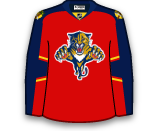
Jensen, 21, has collected 11 points (6G / 5A) in 15 games with the Comets this season. He currently ranks tied for fourth on Utica in scoring. Jensen has appeared in 22 career NHL games, recording six points (3G / 3A) and 10 penalty minutes.
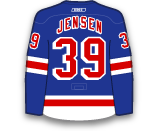
Stollery had one shot and was a plus-1 in 12:29 in the only game during his recall. His return to the AHL suggests that Erik Johnson will be back on Saturday.
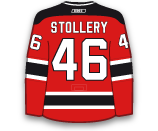
Carey averaged 6:46 TOI and registered one shot in two games during his recall. His assignment to the AHL suggests that John Mitchell (leg) should return on Saturday.
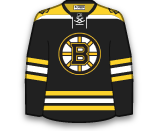
Akeson appeared in 12 games for the Flyers this season, going scoreless and averaging 7:36 of ice-time per game, with his last game coming at Montreal on November 15.
